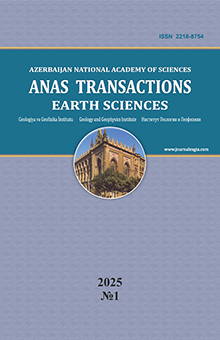The effectiveness of the application of non-stationary flooding at the field X to limit water flows under conditions of uncertainty
Moldabayeva G.Zh., Syzdykov A.Kh., Yeligbayeva G.Zh., Tuzelbayeva Sh.R., Imansakipova Z.B.
NJSC "Kazakh National Research Technical University named after K.I.Satpayev”: moldabaeyva@gmail.com
Summary
The paper highlights the use of non-stationary flooding, which is one of the sufficiently effective methods of increasing the oil recovery coefficient used to change the direction of filtration flows, which allow involving unprocessed oil reserves in development and reduce the rate of flooding of deposits in productive reservoirs. A common technological method of implementing non-stationary flooding is the use of cyclic modes of operation of injection wells.
As a result of the analysis, the positive effect of the implementation of the technology of non-stationary flooding was revealed, and recommendations were made to improve its application at other operational facilities of PU "ZHMG".
Keywords: unsteady flooding, injection well, oil recovery, heterogeneity, cyclic injection
REFERENCE
Рзаева С.Д. Селективная изоляция водопритоков в скважину на основе использования отходов производства. SOCAR Proceedings No. 3, 2020, pp. 118-125, https://doi.org/10.5510/OGP20200300452.
Al-Obaidi S.H., Smirnov V.I., Khalaf F.H. New Technologies to Improve the Performance of High Water Cut Wells Equipped With ESP. Technium, Vol. 3, Issue 1, 2021, pp. 104-113, https://techniumscience.com/index.php/technium/article/view/2518.
Castro-Garcia R.H., Maya-Toro G., Jimenes-Diaz R., Quintero-Perez H., Diaz-Guardia V., Colmenares-Vargas K., Palma-Bustamante J., Delgadillo-Aya C. and Perez-Romero R. Polymer Flooding to Improve Volumetric Sweep Efficiency in Waterflooding Processes. CT&F–Ciencia, Tecnologia y Futuro, Santander, Columbia 2016, http://www.scielo.org.co/scielo.php?script= sci_arttext&pid=S0122-53832016000100004.
Chaudhuri A., Vishnudas R. A systematic numerical modeling study of various polymer injection conditions on immiscible and miscible viscous fingering and oil recovery in a five-spot setup. FUEL ISSN: 0016-2361, Vol. 232, 2022, pp. 431-443, https://doi:10.1016/j.fuel.2018.05.115.
Knobloch L.O., Hincapie Reina R.E., Foedisch H. and Ganzer L. Qualitative and Quantitative Evaluation of Permeability Changes during EOR Polymer Flooding Using Micromodels. World Journal of Engineering and Technology, No. 6, 2018, pp. 332-349, https://doi.org/10.4236/wjet.2018.62021.
Manichand R., Seright R.S. Field vs. Laboratory Polymer-Retention Values for a Polymer Flood in the Tambaredjo Field. SPE Res Eval & Eng, Vol. 17 (03), 2014, pp. 314-325. Paper Number: SPE-169027-PA.
Mishra S., Bera A., Mandal A. Effect of Polymer Adsorption on Permeability Reduction in Enhanced Oil Recovery. Journal of petroleum Engineering, 2014, pp. 1-9, https://doi.org/10.1155/2014/395857.
Mora P., Morra G., Yuen D., Juanes R. Study of the Effect of Wetting on Viscous Fingering Before and After Breakthrough by Lattice Boltzmann Simulations. SPE Middle East Oil & Gas Show and Conference, 2021, SPE-204536-MS, https://doi.org/ 10.2118/204536-MS.
DOI: 10.33677/ggianasconf20230300011
